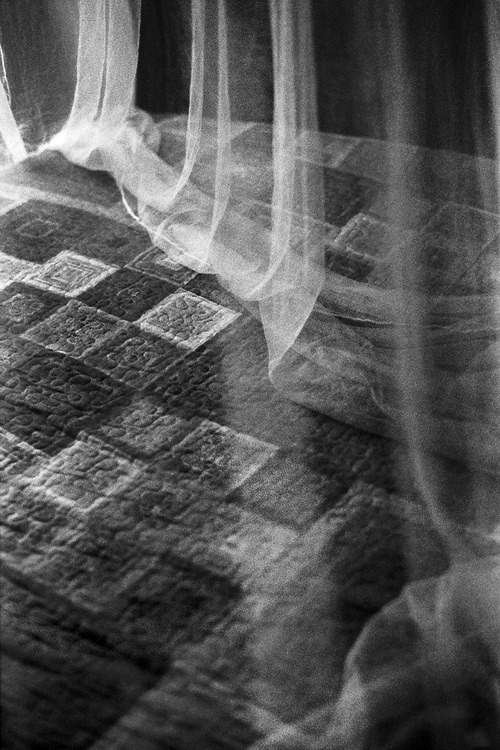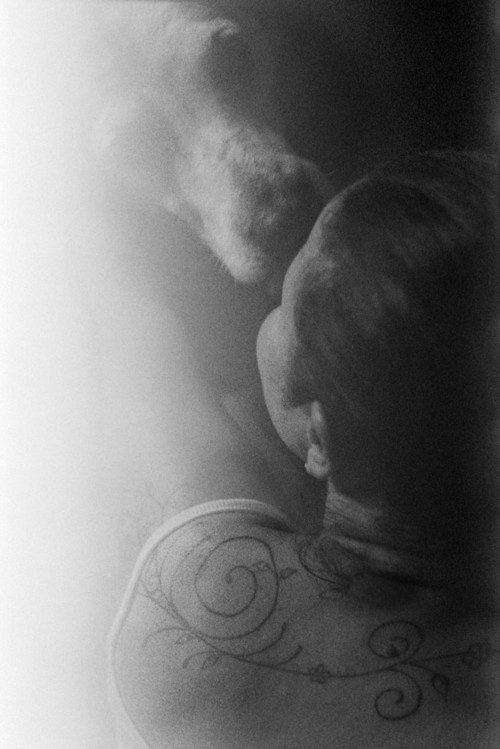In the book ‘Internal Affair’ (Schoeler editions 2014), things do not appear in a realistic manner as they are impregnated of the consequences of a difficult and very particular experience lived by photographer Marcelo Greco. In a conversation with the author I discussed some thoughts that permeate this work. Tell me a little bit about the work, and why it was thought to be a book.
Marcelo Greco (MG): Behind this work there’s a personal story with an emotional intensity that only a sequence of images in a book format could translate. But the book does not speak specifically of a situation. The story was just the inspiration for the work.
The first impression I had was of a very beautiful book, but after some thinking I realized that this work is much more about the sublime than the beauty. Unlike harmony, it presents a disagreement, it disorients the ability of thought. The fear, the pain, the infinite, the rambling… Do you agree?
MG: I agree. The question is not beauty, at least this is not my search. Of course the result can be perceived through the concept of beauty, but more by the layers of its representativeness, or the subjectivity placed in it. So the concept of beauty is not in the formal structure of the image itself. This honestly is not my field of investigation.

© Marcelo Greco
According to Spinoza, the world exists and it affects us from outside to inside. That is, first you get scared, and then you know what scared you. Some people, however, are like the mirrored glass and they only come from within outwards. How do you see yourself?
MG: This response is difficult. We are a universe built through time always in constant transformation. The way the outside world affects us depends largely on our internal universe. I do not think there is a one-way. I often think that the flow is in both directions. The world exists and affects us to react to it, but at the same time, we have an internal world that determines the way we see and respond to stimuli from outside. The “scare” is the consequence of this worlds connection, the internal and the external.

© Marcelo Greco
About my creative process, I’m not interested in building poetic narratives that speak simply of the events themselves, but rather of the internal transformations and mobilizations that such events lead. How do they affect and populate my personal universe.
The Alethea Greek word refers to true in the sense of unveiling, in your images, however, everything seems covered by a veil that would, on the contrary, be oblivion or death. What is the sense of seeing everything through a veil?
MG: Another question that provokes, makes you think… I think death is a very important issue in my work. In a way this veil you cite is related to the previous answer. It is my inner world creating layers of meaning to see and relate to the outside world.
This veil defines a break in the compass of reality. It is as if it helped me screaming: «Look beyond the object in front of you! Look at my pain!» This truth is not what is before us, but what is for us.

© Marcelo Greco
I chose an excerpt from a text by Georges Didi-Huberman about the fog and this paradox of visibility.
«(…) o nevoeiro oferece, numa mesma matéria de descoloração, a distância e a potência, a perda das coisas e a carne das coisas, a sua latência fenomenal. No nevoeiro, é certo, nenhum objeto é visível: a grisalha ocupa todo o campo. Mas a sua matéria visual (a bruma, a sua palidez, a sua diafanidade, a sua humidade) envolve-nos, toca-nos, atravessa-nos, penetra-nos até os ossos, já que respiramos essa matéria de apagamento.» [Georges Didi-Huberman: ’Grisalha: Poeira e poder do tempo’]
In the fog objects lose their essence, disappear, but their visual matter involves us and delights us. Getting to your work the fog becomes part of things and people?
MG: I think that’s right, very well placed. The mist connects all, it is part of everything. It is the contact between the two worlds, is with it that I invent my own world.
Tell me a little of the texts that appear at the end of the book.
« (…) like the taut, smooth skin of a piece of fruit that undergoes a small catastrophe when bitten, draining its juice away».
Clarice Lispector
MG: The phrase by Clarice Lispector speaks of a thin layer, the skin of the fruit, which when broken is overflowing something essential. I think that’s how I see the images of this work. There is a thin layer which is very resistant, that is there, and that has to be broken to allow you to feel everything that’s inside. But that depends on a motion, in this case, of the viewer.

© Marcelo Greco
As for the text written by me - and I must say I’m not a good write - it is only one key, an invitation to people to come back several times to the book and to take a look again, trying to understand all the layers that are there. I find it funny when people ask me why there is not in the book a text explaining what is the real intention of the project. I answer that there is a text but it is not made of words… You must know how to read!
«Some tears are good for us, clean our soul purify the heart. Other ones, drops of pain caused by people and situations. Among these there are those that are unavoidable, they teach us about life. Many others we must simply dry out and move on. Internal Affair is one of those intimate moments, to move on and reconcile with life. Facing your inner world and projecting it in your surroundings is a poetic way of life».
Marcelo Greco
---
LINKS
Marcelo Greco
Brazil
share this page